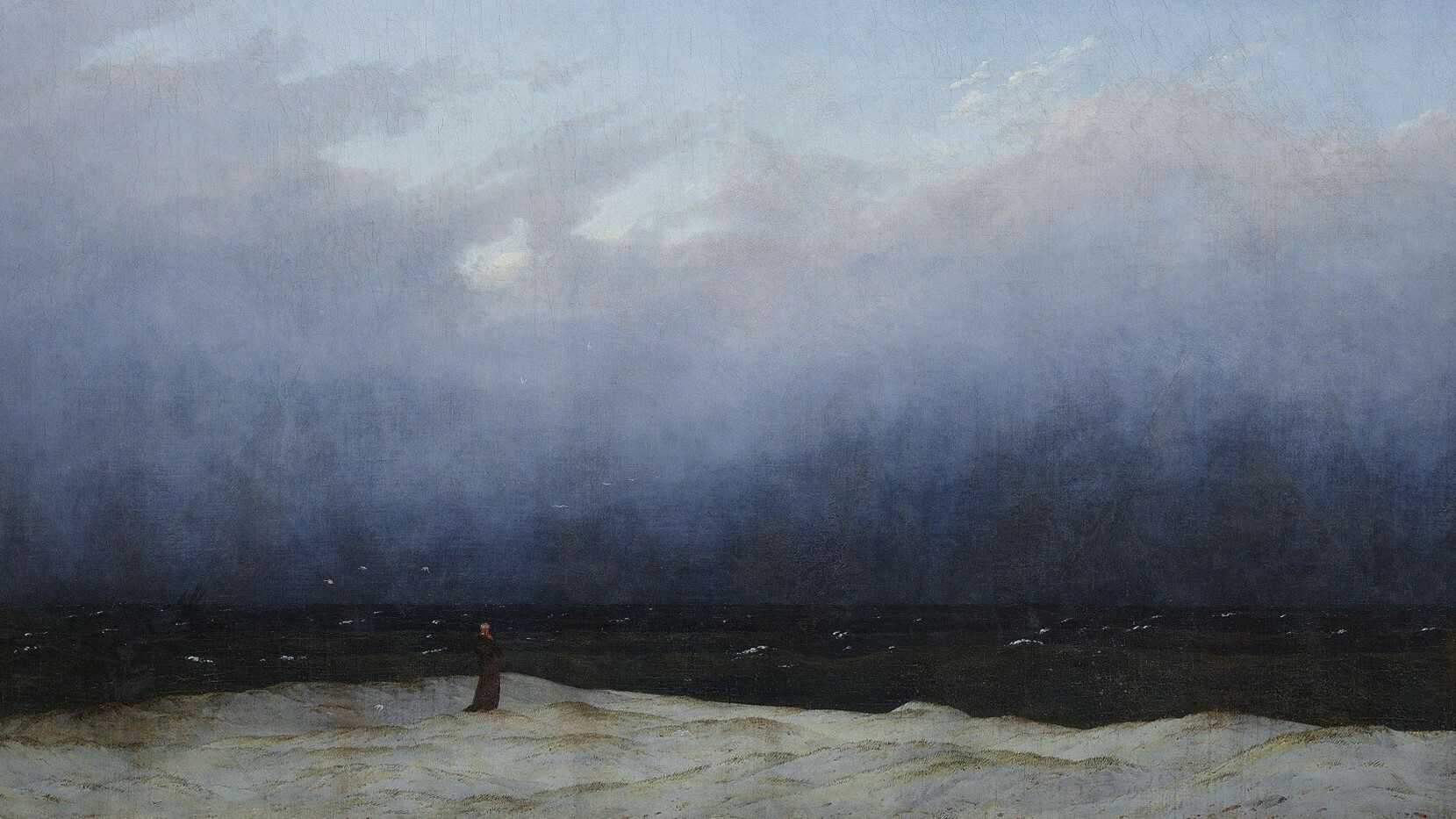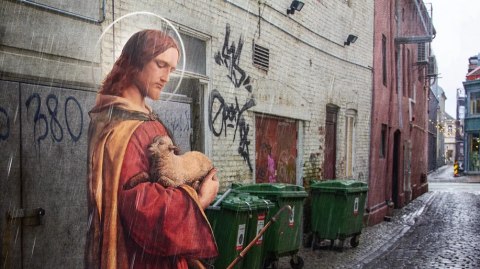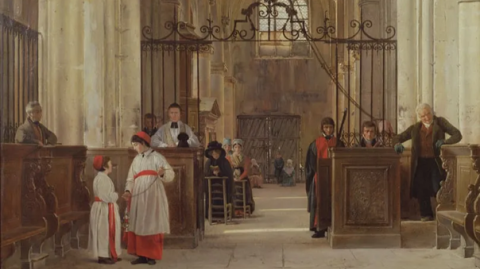TLDR: Beauty—no matter the form-whether in the form of paintings, architecture, sculptures, literature, poetry, music, or nature—has been and should continue to be a great way for the church to proclaim the unconditional love of God.
Pope Francis speaks of the “via pulchritudinis,” which is Latin for “the way of beauty.” “Proclaiming Christ,” Francis says, “means showing that to believe in and to follow Christ is not only something right and true, but also something beautiful. . . . Every expression of true beauty can thus be acknowledged as a path leading to an encounter with the Lord Jesus.” As a priest in the Episcopal church, my desire is, has been and will be for all to encounter and know the way of beauty, the way of love, the way to God through Jesus Christ by the Holy Spirit.
Beauty—no matter the form-whether in the form of paintings, architecture, sculptures, music, nature—has been and should continue to be a great way for the church to proclaim the unconditional love of God. And whatever is beautiful in the culture—from a good triple play at an Astros game to the music of Dolly Parton, Jimmy Buffet or Charlie Crockett—can possibly open the unspiritual or nonreligious to The Source of all Beauty.
The natural world obviously reflects beauty. It does so because it was made by God. A study of the whole natural world - the cosmos - is a study of the path to God because creation bears the fingerprint of Creator. We are all made in the image of God! Oh, how I love that phrase!
One way God continues to lead me on this path is through the discovery of beauty found in art. It was not until my first year in seminary that I discovered the theology of beauty. Theology of beauty, also known as theological aesthetics, is a theory that explores the relationship between beauty and God, as well as how the senses relate to faith. During my time at St. Dunstan’s, one desire was to share with you some of that beauty. I have offered various pieces of art which have accompanied me on my path of spiritual growth. Art has a way of seeping into our minds, and walking with us on this journey of life as a constant reminder of the Creator. Sharing some of my favorite paintings along with some newly discovered art has been a true joy. I am reminded of a verse from the book of Proverbs,
Sharpening one another is what we do as a family. That’s what it means to be in community, part of the body of Christ, God’s family. You have shared your lives with me, and I have learned so much from you! Thank you!
So, here’s a final painting I want to leave with you as this is my final blog. It comes from the father of the German Romanticism, painter Caspar David Friedrich.
At the end of the 18th century and well into the 19th, Romanticism quickly spread throughout Europe and the United States to challenge the rational ideal held so tightly during the Enlightenment. It was thought during the Enlightenment that human reasoning could discover truths about the world, religion, and politics and could be used to improve the lives of humankind. On the other hand, the artists in the Romanticism movement emphasized that sense and emotions - not simply reason and order - were equally important means of understanding and experiencing the world. Romanticism celebrated the individual imagination and intuition in the enduring search for individual rights and liberty. Can you reason beauty? God designed us: body, mind, and soul. God designed us to use our reasoning abilities along with our emotions inside our bodies. God created us to seek beauty!
Friedrich’s Monk by the Sea captured my heart the moment I saw it in an undergraduate class of art history years ago. It has stayed with me, inspired me, and reminded me. I am reminded when I see this painting that life is often out of my control; there are things lofty and wonderful that I will never understand. Often, all I am called to do is simply stand and be in awe.
Although it has many contemporary features, it was painted over 200 years ago in 1808. The monk appears almost inconsequential – a small lone figure in dark attire. The deep blue sea is flecked with white, suggesting the threat of a storm. Above the monk, blue-grey clouds gather giving way in the highest part to a clearer, calmer blue.
Seeking to capture an experience of the infinite, Caspar David Friedrich composed works that directly confronted the viewer with the awesome. Who hasn’t stood beside the ocean and felt the tremendous power, the mystery, boundless awesomeness? Friedrich took the genre of landscape painting, traditionally considered unimportant, and infused it with deep spiritual significance. Believing that the majesty of the natural world could only reflect the magnificence of God, Friedrich’s painting conveys the beautiful power of the divine. In Monk by the Sea, Friedrich uses color and form to reveal the emotions of an individual at a time of great change. Life changes each and every day, and aren’t we glad? My life is about to change again as I make the trek back to Smith County and shift to working in a school environment.
What a journey this blogging business has been. Week after week you patiently read my numerous thoughts on a variety of subjects. We have walked together throughout the seasons of the year and seasons in life. Since being your curate, I have grown exponentially in my journey to the priesthood. You have been with me every step of the way. For that, I am eternally grateful.
St. Dunstan’s Episcopal Church has a legacy for training up curates. I am blessed to be added to this privileged list. Thank you for care and concern for me and my family. Thank you, Fr. Roman, for taking the time to teach me, walk with me, lead me, and guide me. I deeply appreciate the patience you offered as I stood behind the altar and pulpit enduring my learning curves. Thank you to all the staff, the vestry, the bounty of incredible servants who make up the body of Christ known as St. Dunstan’s Episcopal Church. Your generosity knows no bounds. I am thankful to have been part of this family for this important part of my journey. Oh, how the Holy Spirit leads us and guides along life’s many paths and it has been truly exciting to be part of God’s work here! There is a profound beauty in true joy, and this joy can be seen here at St. Dunstan’s. I have seen here beautiful servant hearts who abandon themselves to follow Jesus Christ. Dear St. Dunstan family, I have witnessed your joy and your love for our Lord and for one another. There is a great beauty in that. Thank you for allowing me to experience the beauty here.
Here are some questions for you to think about. Where do you find beauty in your life? How can you find beauty in the changes happening all around? My hope for each of you is that you experience unconditional love found in God through Jesus by the Holy Spirit as you travel the via pulchritudinis.
Rev. Leesa+
Caspar David Friedrich, Monk by the Sea, 1808





